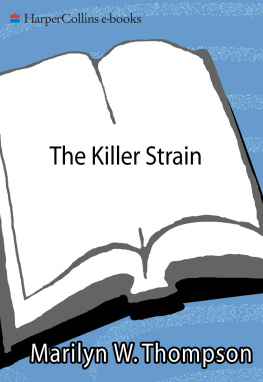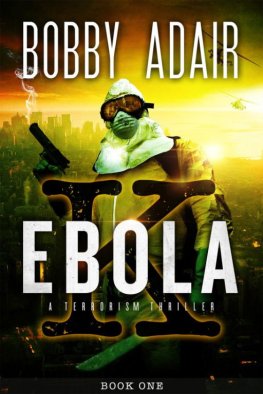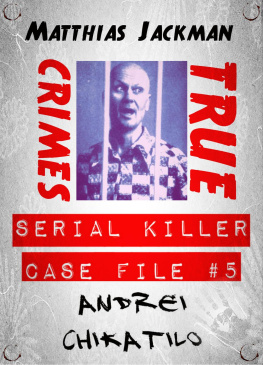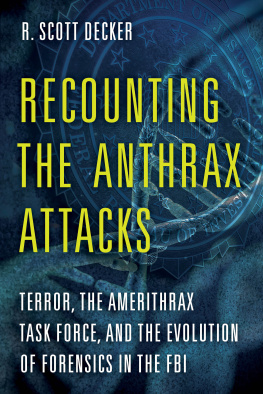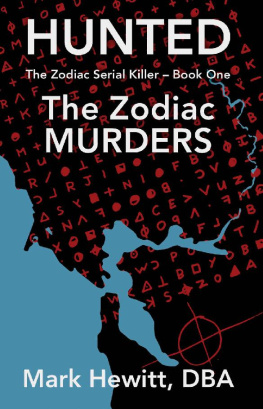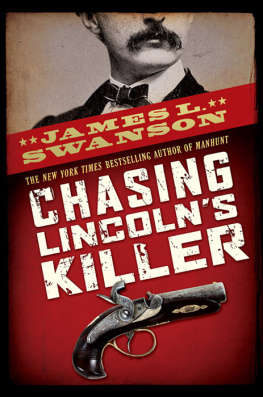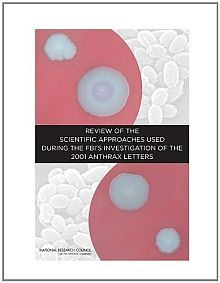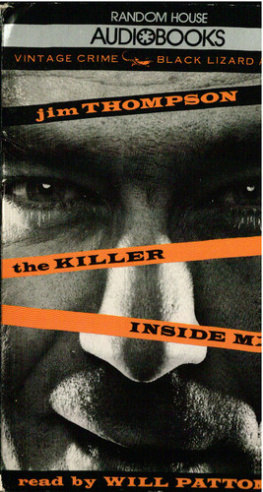October 19, 2001
S TAFFORD , V IRGINIA
By the time Leroy Richmond awoke, the lethal spores had settled into his lungs, but of course he did not know it. He felt hot and achy, and wondered if he might be coming down with the flu. It was before dawn on Friday, a regular workday at the U.S. Postal Service, and Richmond did not indulge thoughts of staying home. His wife, Susan, often complained that he was married to the joba workaholicbut he looked forward to each day of handling express mail at the cavernous Brentwood Mail Processing and Distribution Center in Washington, D.C.
Richmond slowly rolled out of bed and washed and dressed as usual, trying to ignore the erratic fever he had been battling for several days. He would feel bad and then suddenly better, a phenomenon known in the medical literature as an eclipse. He had been treating his symptoms with common aspirin, a laughable remedy given the virulent nature of the bacteria infecting him, like confronting an attacking tiger with a pellet gun. The aspirin made him feel better, but the relief was perilously deceptive. Microscopic rod-shaped germs arrayed in long, narrow chains incubated in the warm recesses of his chest, mustering for a stealthy assault. Within hours, Statistically, he had a slim chance of beating the pathogen unleashed inside his body.
The clock read 2:50 A.M. as Richmond tiptoed through the dark, past polished tables filled with photographs of family, some of whom were still sleeping in the rooms behind him. His wife kept their two-story house immaculate, the white overstuffed furniture in the living room spotless, the dining-room table set as if for company, with cloth napkins tucked into crystal glasses. They had lived in the spacious home for seven years, a testament to their upward striving. Richmond, a tall, slender man born in Newport News, Virginia, had worked for USPS for thirty-two years, mostly at Brentwood and its predecessor on North Capitol Street. Brentwood was so full of old-timers that it felt like a second home. Everyone there called him Rich, never Leroy. He had met the feisty Susan there, working the line.
It was not an instant attraction. One day, a supervisor sent her over to help him manually sort mail. To the industrious Rich, all she seemed to do was complain. She was tired. She didnt feel well. Before long, he caught her catnapping.
He asked his boss not to send her over again. The next day, there she was, grumbling, napping, disappearing for long breaks. Rich asked her to speed up, and she shot him a cutting look and barked, Youre not my supervisor! Rich went back to the boss and suggested that he fire her.
Rich ran into Susan sometime later at a club, dancing, turning on the charm. He was mesmerized. He couldnt get her off his mind, her broad hips and beautiful braids. A fiery courtship began, and they were married in less than a year.
Now that their youngest child, Quentin, was seven, they found working alternate Brentwood shifts the best way of managing their hectic lives. The routine was taxing. Susan had come home from that nights shift and crawled into bed after 1 A.M. , just before Richs day began. She noticed him feebly dressing for work, coughing, looking gaunt and worn after several days of inexplicable tiredness. Not mincing words, she called out:
You look like a crack addict! Where are you going?
Going to work. He sighed.
She scowled as he downed more aspirin and finished preparing to leave.
Me? she would say later, standing defiantly with hands on hips. I take some medication and roll over. Hell have a hundred-and-two-degree fever and go to work!
True, it had been years since Rich had called in sick. He was more likely to volunteer for overtimeanything to keep the money rolling in.
Anyway, there seemed to be little use asking for time off from Brentwoods hard-line management. Unspoken tension divided the center between the almost exclusively African-American workforce, stationed behind chugging machines and conveyor belts, and the many white supervisors patrolling the production lines. The U.S. Postal Service (USPS) touted its minority hiring as a sign of progressive management, but among some of the workers, the atmosphere so harkened back to the plantation days of the Old South that they derisively referred to Brentwoods floor as the field.
Rich tried not to think in such stark racial terms. He only knew that the last time he had asked for time off, to attend his now-grown daughters school play, his supervisor had scoffed at him. He had never asked for a favor again.
Besides, he took pride in postal work and knew he was good at it. Name a street address, a federal building or embassy anywhere in Washington, and he could rattle off the zip code from memory, the result of untold hours of training. Years ago, he had walked the streets of suburban Washington to stuff letters into mailboxes, so he knew firsthand that Americans took seriously the credo that neither snow, nor rain would stop the U.S. mail. There was something exhilarating about leaving a mailbox full of letters and colorful postcards, third-class catalogs and cumbersome junk mail, then watching expectant old ladies and children rush out the door to retrieve their surprises as he walked away. Sometimes, they peeked from behind curtains mysteriously, trying to speed the process. He was Santa Claus in a blue uniform.
That morning, sweating and breathing hard, his head pounding, Rich climbed into his blue 1980 Sierra that had seen too many miles and pulled resolutely out of the asphalt driveway, setting off on the fifty-three-mile commute into Washington. He and Susan had been lured to Stafford by affordable housing that made it possible for a working couple to live like the rich, with enough bedrooms to accommodate visiting relatives and big lawns with azaleas and backyard swing sets. He made a left out of the tight cul-de-sac, winding through the neighborhood of cookie-cutter designs and two-and three-car garages. A sharp right took him onto Highway 610, the main drag through Stafford, past the gas station where he usually stopped for coffee. After zooming through a chain of traffic lights along the darkened commercial strip, past empty strip malls and sprawling discount stores, he finally exited onto Interstate 95 toward Washington.
At this time every morning, Rich realized the benefit of his ungodly hours. His schedule allowed him to avoid one of the worst commuter nightmares in America, a bumper-to-bumper backup of Washington-bound bureaucrats and federal worker bees that started as early as 5 A.M. and seemed never to stop. The roads were so predictably jammed during rush hours that many drivers took the risk of picking up strangers at bus stops so they could zip into the High Occupancy Vehicle lanes, which required three or more passengers to enter. Rich did not have to bother with such nonsense. He could drive undeterred through the lush Virginia countryside, where wildlife often ambled wide-eyed across the highway, and past the sprawling Potomac Mills Outlet Mall, in daytime hours a dreaded bottleneck of tourists and bargain hunters. He could even breeze past the notorious congestion center along I-95 known as the Mixing Bowl, which blended the crisscrossing highways of Arlington and Alexandria.
Rich zipped through the interchange and passed the Pentagon. Since September 11, one side of the building stood in rubble where terrorists had rammed a hijacked jetliner into it, and workers sifted through the charred remains. Such distractions were best ignored. Richs drive time, sixty-five minutes, was unfailingly predictable if he stayed on course. He would leave I-95, exit onto the Southeast Freeway to New York Avenue, wind his way back to Brentwood Street NE, and pull into the postal centers sprawling parking lot at 3:55 A.M.

